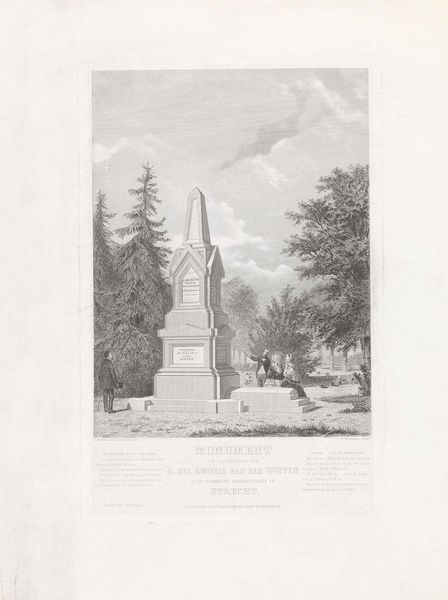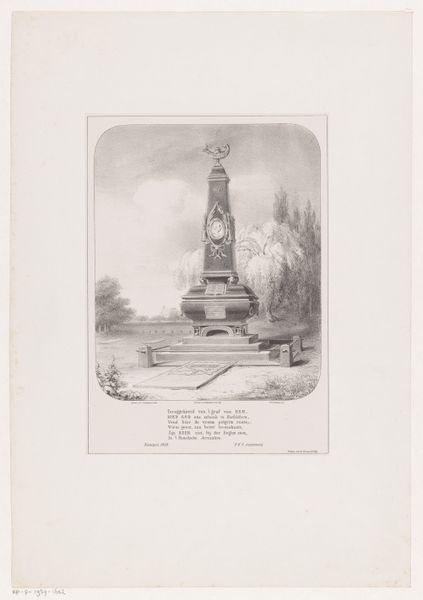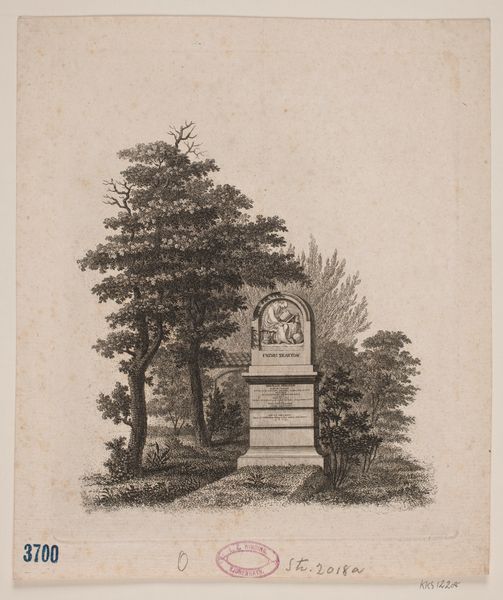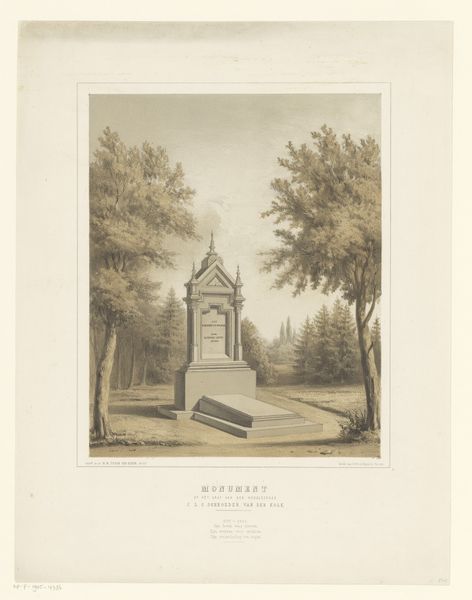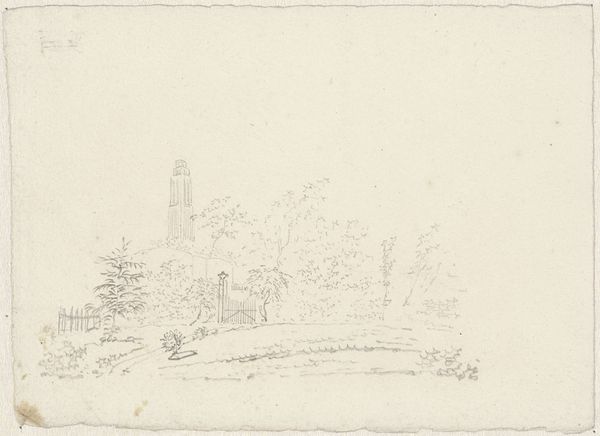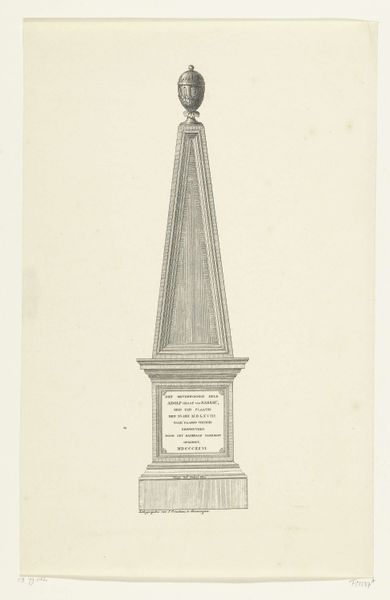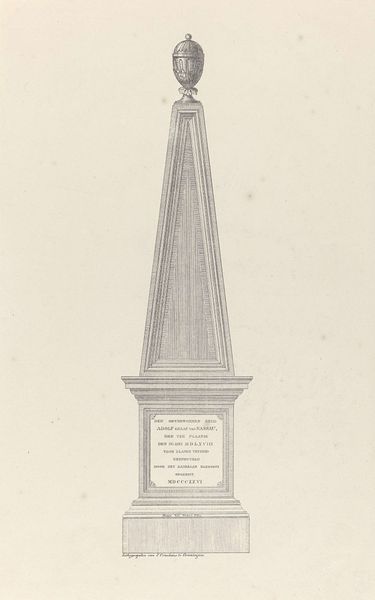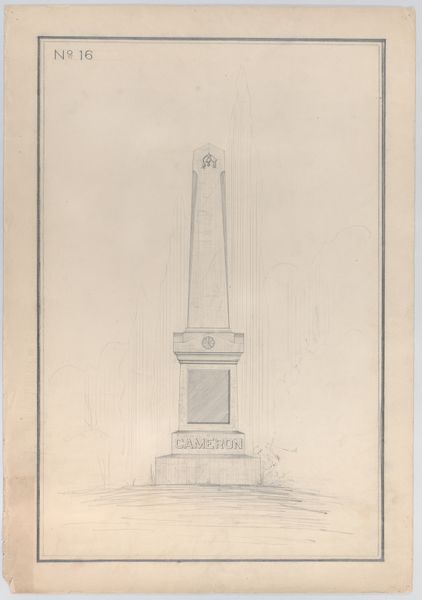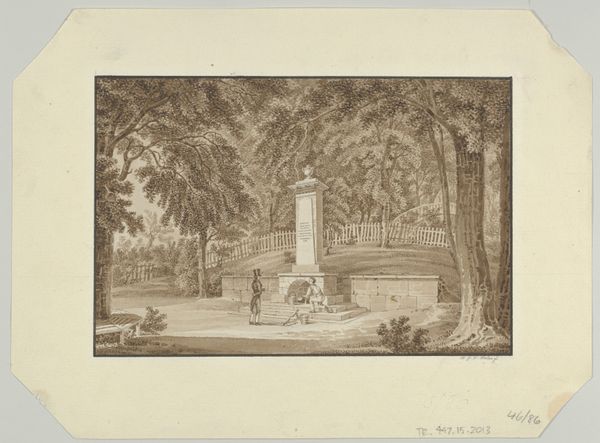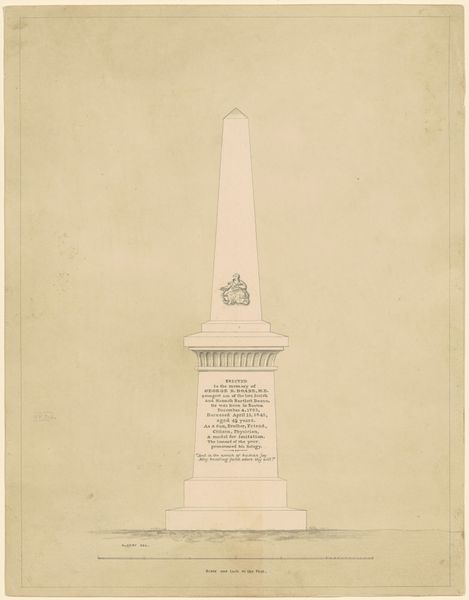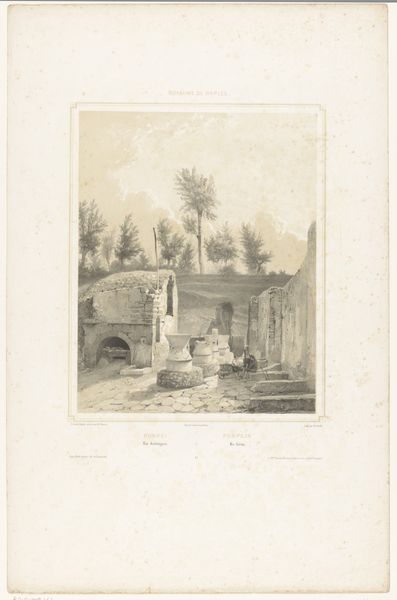
Graftombe van Abraham des Amorie van der Hoeven 1855 - 1887
0:00
0:00
drawing, pencil
#
pencil drawn
#
drawing
#
pencil sketch
#
landscape
#
etching
#
pencil
#
pencil work
#
realism
Dimensions: height 540 mm, width 350 mm
Copyright: Rijks Museum: Open Domain
Editor: This is Carel Christiaan Antony Last’s "Graftombe van Abraham des Amorie van der Hoeven," created between 1855 and 1887, a drawing rendered in pencil. The monument depicted has a quiet, almost ethereal presence against the backdrop of wispy trees. What draws your attention to this particular piece? Curator: Considering the medium, pencil, let’s consider the availability and cost of materials during the mid-19th century. How accessible was high-quality paper and graphite to artists like Last? Was this piece created for reproduction, perhaps as an etching, and how would the print market affect Last’s artistic labor? Editor: So, are you thinking about the artwork as a commodity? Curator: Precisely. It speaks to a culture of memorialization where even the method of depiction carries a socio-economic weight. Look at the detail, achieved with such a readily available medium. Was this for a patron, a direct commission perhaps? What determined the value placed on the work considering its means of production? Editor: That’s fascinating, the idea of assessing the value of the work based on the artist's effort and the material context of its creation, not just its aesthetic qualities. Curator: The labor invested becomes intrinsically linked to our understanding, doesn't it? We can infer quite a lot about 19th-century artistic production by carefully assessing the materials and social conditions evident in the artwork. Editor: This really makes me think about how much of art history I've viewed through a purely aesthetic lens, neglecting the crucial aspect of how art is actually made. Curator: Indeed! Now when we view the object, we look at not just "what" it depicts but "how" that depiction came to be and the socio-economic influences it had. A simple pencil sketch transforms into a window into the 19th-century art world and its markets.
Comments
No comments
Be the first to comment and join the conversation on the ultimate creative platform.
